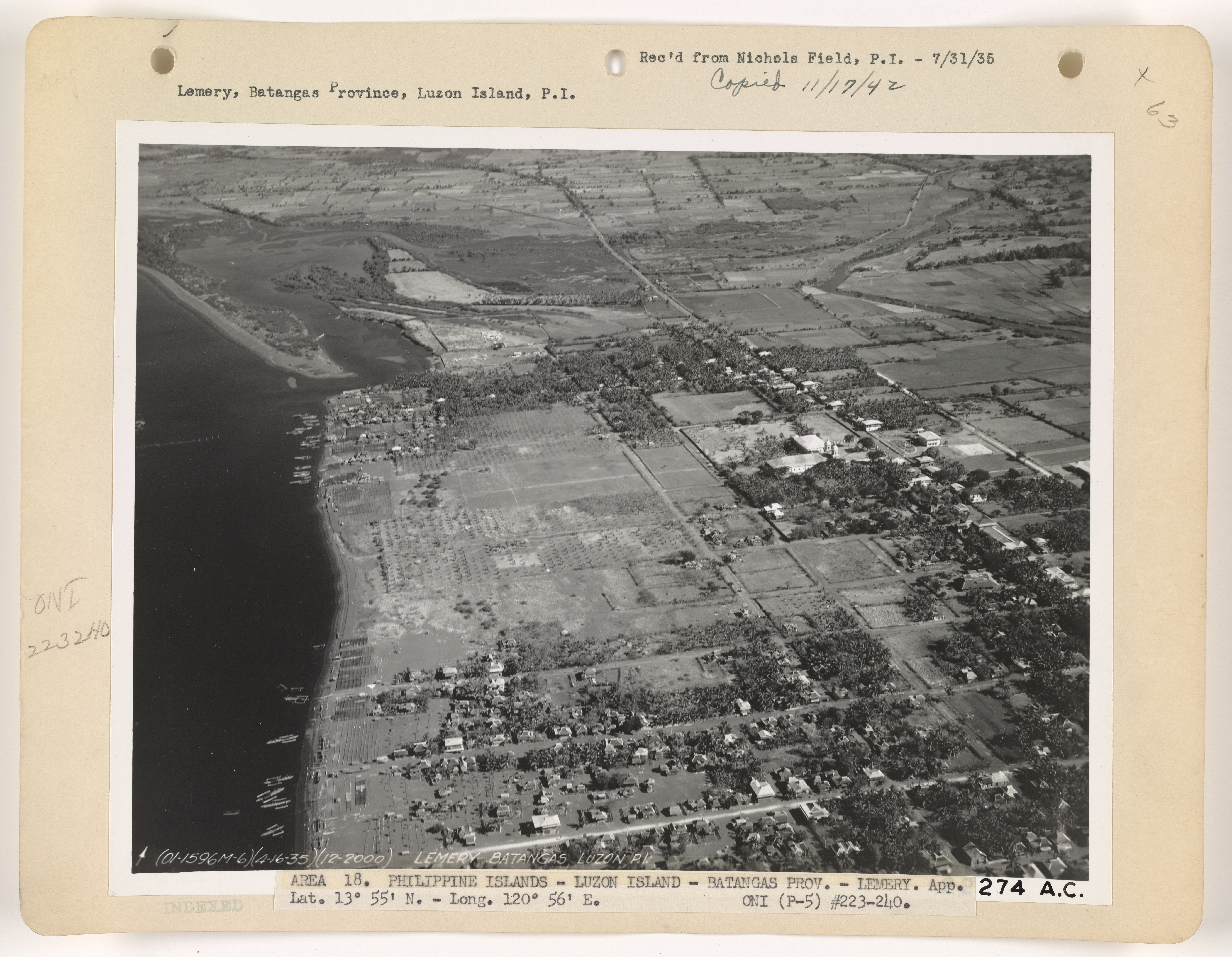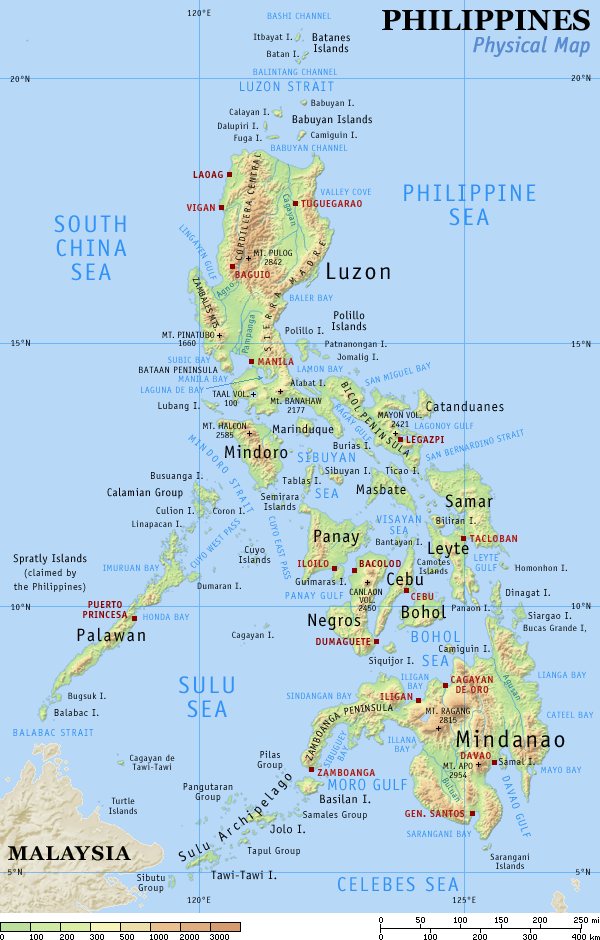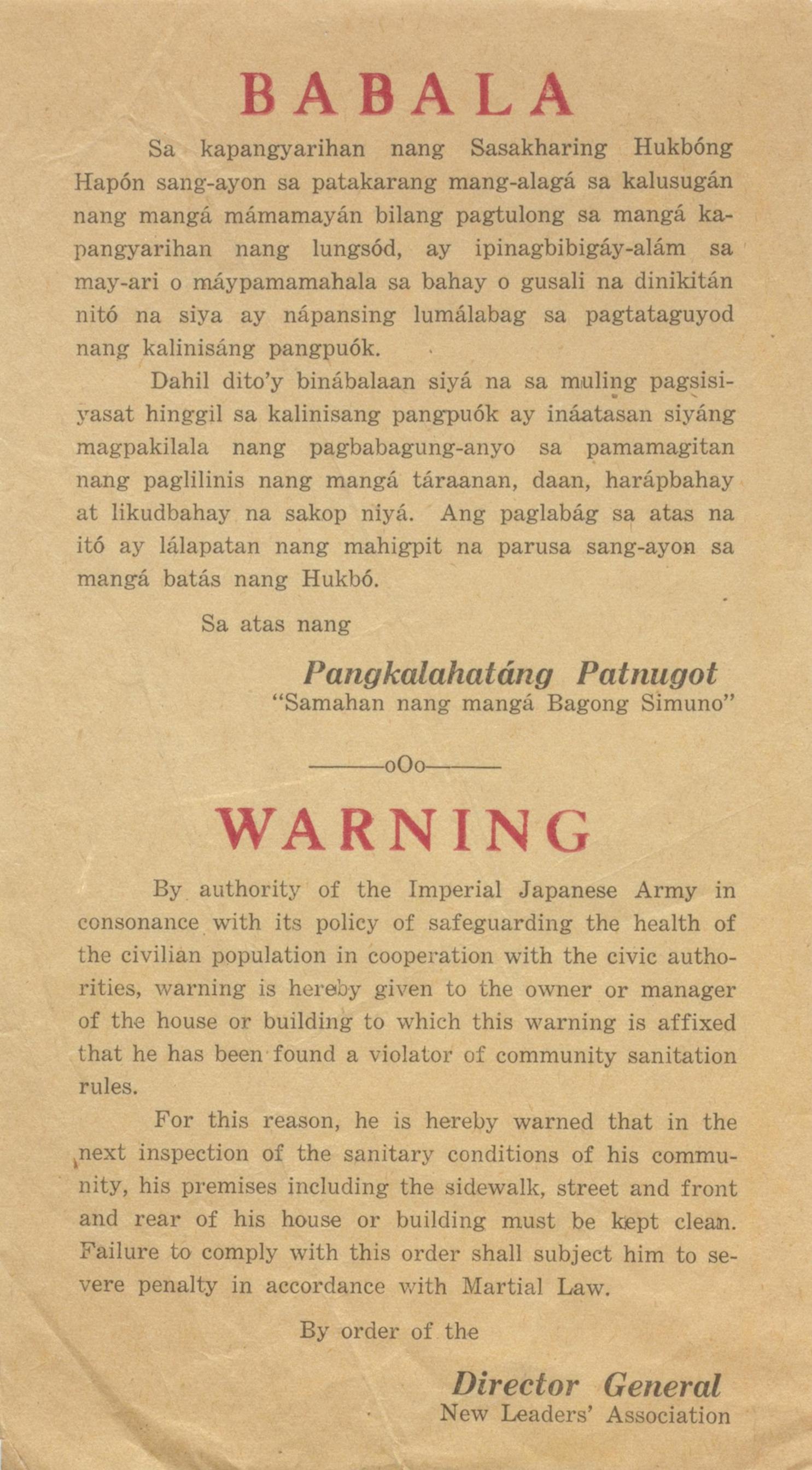|
Pansipit River
The Pansipit River is a short river located in the Batangas province of the Philippines. The river is the sole drainage outlet of Taal Lake, which empties to Balayan Bay. The river stretches some passing along the municipalities of Agoncillo, Lemery, San Nicolas, and Taal, serving as a boundary between the communities. It has a very narrow entrance from Taal Lake. Etymology The Pansipit River was known as the Taa-lan River. The municipality of Taal and the Taa-lan River were named after the Taa-lan tree, which grows along the river. The tree also grew along the shore of Bombon Lake (now known as Taal Lake). History Before the eruptions of Taal Volcano in the 18th century, Pansipit was a navigable channel connecting Taal Lake to Balayan Bay. Sailing ships and Chinese junks freely entered Taal Lake to visit the town of Taal and other population centers along its shores.Herre, Albert (1927)"The Fisheries of Taal Lake and Lake Naujan" pp. 288-289. Philippine Journal of S ... [...More Info...] [...Related Items...] OR: [Wikipedia] [Google] [Baidu] |
Lemery, Batangas
Lemery, officially the Municipality of Lemery ( tgl, Bayan ng Lemery), is a 1st class municipality in the province of Batangas, Philippines. According to the 2020 census, it has a population of 93,186 people. Lemery is a growing urban center in western Batangas. The municipality was named after Captain Roberto Lemery, a commanding officer of the local garrison. He took command of the local military outpost until his death in 1856. History During the early part of the 18th century, adventurous settlers from Taal, northern Mindoro and southern Cavite were attracted to the vast plain near the shores of Balayan Bay because of its abundance in fish and other marine life. Salting and drying fish became their major occupation due to the great demand of salted and dried fish by the people of Cavite, Mindoro, Laguna and Batangas. People came in great numbers to join the settlers, and the village became populous. The place was first called ''Punta'', meaning "point". In 1818, the v ... [...More Info...] [...Related Items...] OR: [Wikipedia] [Google] [Baidu] |
Carangidae
The Carangidae are a family of ray-finned fish which includes the jacks, pompanos, jack mackerels, runners, and scads. It is the largest of the six families included within the order Carangiformes. Some authorities classify it as the only family within that order but molecular and anatomical studies indicate that there is a close relationship between this family and the five former Perciform families which make up the Carangiformes. They are marine fishes found in the Atlantic, Indian and Pacific Oceans. Most species are fast-swimming predatory fishes that hunt in the waters above reefs and in the open sea; some dig in the sea floor for invertebrates. The largest fish in the family, the greater amberjack, ''Seriola dumerili'', grows up to 2 m in length; most fish in the family reach a maximum length of 25–100 cm. The family contains many important commercial and game fish, notably the Pacific jack mackerel, ''Trachurus symmetricus'', and the other jack mackerels in ... [...More Info...] [...Related Items...] OR: [Wikipedia] [Google] [Baidu] |
List Of Protected Areas Of The Philippines
This is a list of protected areas of the Philippines administered by the Department of Environment and Natural Resources (DENR)'s Biodiversity Management Bureau under the National Integrated Protected Areas System (NIPAS) Act of 1992. As of 2020, there are 244 protected areas in the Philippines covering a total area of about – 15.4% of the Philippines' total area. History The first important legislation that formed the basis of the current system of national parks and protected areas in the Philippines is Act No. 648, enacted in 1903 by the Philippine Commission. This act authorized the civil governor to "reserve for civil public purposes, and from sale or settlement, any part of the public domain not appropriated by law for special public purposes." A total of eight national reserves had been established on July 26, 1904, pursuant to this law. These are the Lamao Forest Reserve in Bataan, Mariquina Reserve in Rizal, Angat River Reserve in Bulacan, Caliraya Falls Reserv ... [...More Info...] [...Related Items...] OR: [Wikipedia] [Google] [Baidu] |
Protected Area
Protected areas or conservation areas are locations which receive protection because of their recognized natural, ecological or cultural values. There are several kinds of protected areas, which vary by level of protection depending on the enabling laws of each country or the regulations of the international organizations involved. Generally speaking though, protected areas are understood to be those in which human presence or at least the exploitation of natural resources (e.g. firewood, non-timber forest products, water, ...) is limited. The term "protected area" also includes marine protected areas, the boundaries of which will include some area of ocean, and transboundary protected areas that overlap multiple countries which remove the borders inside the area for conservation and economic purposes. There are over 161,000 protected areas in the world (as of October 2010) with more added daily, representing between 10 and 15 percent of the world's land surface area. As of 20 ... [...More Info...] [...Related Items...] OR: [Wikipedia] [Google] [Baidu] |
Current (stream)
A current in a stream is the flow of water influenced by gravity as the water moves downhill to reduce its potential energy. The current varies spatially as well as temporally within the stream, dependent upon the flow volume of water, stream gradient, and channel geometry. In tidal zones, the current and streams may reverse on the flood tide before resuming on the ebb tide Tides are the rise and fall of sea levels caused by the combined effects of the gravitational forces exerted by the Moon (and to a much lesser extent, the Sun) and are also caused by the Earth and Moon orbiting one another. Tide tabl .... See also * * * * * * {{authority control Coastal geography Hydrology Rivers Water streams ... [...More Info...] [...Related Items...] OR: [Wikipedia] [Google] [Baidu] |
Fish Farming
upright=1.3, Salmon farming in the sea (mariculture) at Loch Ainort, Isle of Skye">mariculture.html" ;"title="Salmon farming in the sea (mariculture">Salmon farming in the sea (mariculture) at Loch Ainort, Isle of Skye, Scotland Fish farming or pisciculture involves commercial animal husbandry, breeding of fish, usually for food, in fish tanks or artificial pen (enclosure), enclosures such as fish ponds. It is a particular type of aquaculture, which is the controlled cultivation and harvesting of aquatic animals such as fish, crustaceans, molluscs and so on, in natural or pseudo-natural environment. A facility that releases juvenile fish into the wild for recreational fishing or to supplement a species' natural numbers is generally referred to as a fish hatchery. Worldwide, the most important fish species produced in fish farming are carp, catfish, salmon and tilapia. Global demand is increasing for dietary fish protein, which has resulted in widespread overfishing in wild ... [...More Info...] [...Related Items...] OR: [Wikipedia] [Google] [Baidu] |
World War II
World War II or the Second World War, often abbreviated as WWII or WW2, was a world war that lasted from 1939 to 1945. It involved the vast majority of the world's countries—including all of the great powers—forming two opposing military alliances: the Allies and the Axis powers. World War II was a total war that directly involved more than 100 million personnel from more than 30 countries. The major participants in the war threw their entire economic, industrial, and scientific capabilities behind the war effort, blurring the distinction between civilian and military resources. Aircraft played a major role in the conflict, enabling the strategic bombing of population centres and deploying the only two nuclear weapons ever used in war. World War II was by far the deadliest conflict in human history; it resulted in 70 to 85 million fatalities, mostly among civilians. Tens of millions died due to genocides (including the Holocaust), starvation, ma ... [...More Info...] [...Related Items...] OR: [Wikipedia] [Google] [Baidu] |
Japanese Occupation Of The Philippines
The Japanese occupation of the Philippines (Filipino: ''Pananakop ng mga Japones sa Filipinas''; ja, 日本のフィリピン占領, Nihon no Firipin Senryō) occurred between 1942 and 1945, when Imperial Japan occupied the Commonwealth of the Philippines during World War II. The invasion of the Philippines started on 8 December 1941, ten hours after the attack on Pearl Harbor. As at Pearl Harbor, American aircraft were severely damaged in the initial Japanese attack. Lacking air cover, the American Asiatic Fleet in the Philippines withdrew to Java on 12 December 1941. General Douglas MacArthur was ordered out, leaving his men at Corregidor on the night of 11 March 1942 for Australia, 4,000 km away. The 76,000 starving and sick American and Filipino defenders in Bataan surrendered on 9 April 1942, and were forced to endure the infamous Bataan Death March on which 7,000–10,000 died or were murdered. The 13,000 survivors on Corregidor surrendered on 6 May. Japan occupie ... [...More Info...] [...Related Items...] OR: [Wikipedia] [Google] [Baidu] |
Commonwealth Of The Philippines
The Commonwealth of the Philippines ( es, Commonwealth de Filipinas or ; tl, Komonwelt ng Pilipinas) was the administrative body that governed the Philippines from 1935 to 1946, aside from a period of exile in the Second World War from 1942 to 1945 when Japan occupied the country. It was established following the Tydings–McDuffie Act to replace the Insular Government, a United States territorial government.. The Commonwealth was designed as a transitional administration in preparation for the country's full achievement of independence. Its foreign affairs remained managed by the United States. During its more than a decade of existence, the Commonwealth had a strong executive and a Supreme Court. Its legislature, dominated by the Nacionalista Party, was at first unicameral, but later bicameral. In 1937, the government selected Tagalog – the language of Manila and its surrounding provinces – as the basis of the national language, although it would be many years befor ... [...More Info...] [...Related Items...] OR: [Wikipedia] [Google] [Baidu] |
Closed Season
A hunting season is the designated time in which certain game animals can be killed in certain designated areas. In the United States, each state determines and sets its own specific dates to hunt the certain game animal, such as California, in which they designate certain zones, in which each have their own separate dates in order to legally hunt. In the United States, each state has primary responsibility and authority over the hunting of wildlife that resides within state boundaries. State wildlife agencies that sell hunting licenses are the best source of information regarding hunting seasons, areas open/closed to hunting, etc. Hunting of migratory birds such as ducks and geese A goose ( : geese) is a bird of any of several waterfowl species in the family Anatidae. This group comprises the genera '' Anser'' (the grey geese and white geese) and ''Branta'' (the black geese). Some other birds, mostly related to the she ... is managed cooperatively by state fish and wild ... [...More Info...] [...Related Items...] OR: [Wikipedia] [Google] [Baidu] |
Taal Lake Vicinity
Taal may refer to: *An early name for the Afrikaans language *The South African creole language Tsotsitaal Geography * Taal, Batangas, a municipality in the Philippines * Taal Lake, a freshwater lake in the Philippines * Taal Volcano, an active volcano in the Philippines Arts and fiction * Taal (instrument), Indian hand clash cymbals *Tala (music) or taal, the term used in Indian classical music to refer to musical meter * ''Taal'' (film), 1999 Indian Hindi film by Subhash Ghai *Taal, God of Beasts in the universe of Warhammer Fantasy (setting) *Taal, progressive rock band from France See also *Ta'al (Arab Movement for Renewal), an Arab-Israeli political party founded by Ahmad Tibi *Ta'al is also an abbreviation for tat aluf, Israeli military rank *Talen (other) Transcription activator-like effector nucleases (TALEN) are restriction enzymes that can be engineered to cut specific sequences of DNA. They are made by fusing a TAL effector DNA-binding domain to a DNA cle ... [...More Info...] [...Related Items...] OR: [Wikipedia] [Google] [Baidu] |
Carcharhinus Leucas
The bull shark (''Carcharhinus leucas''), also known as the Zambezi shark (informally zambi) in Africa and Lake Nicaragua shark in Nicaragua, is a species of requiem shark commonly found worldwide in warm, shallow waters along coasts and in rivers. It is known for its aggressive nature, and presence mainly in warm, shallow brackish water, brackish and freshwater systems including estuaries and lower reach (geography), reaches of rivers. Bull sharks are euryhaline and can thrive in both saltwater, salt and fresh water. They are known to travel far up rivers, and have been known to travel up the Mississippi River as far as Alton, Illinois, about from the ocean, but few freshwater interactions with humans have been recorded. Larger-sized bull sharks are probably responsible for the majority of littoral zone, nearshore shark attacks, including many incidents of shark bites attributed to other species. Unlike the river sharks of the genus ''Glyphis (shark), Glyphis'', bull sharks a ... [...More Info...] [...Related Items...] OR: [Wikipedia] [Google] [Baidu] |




